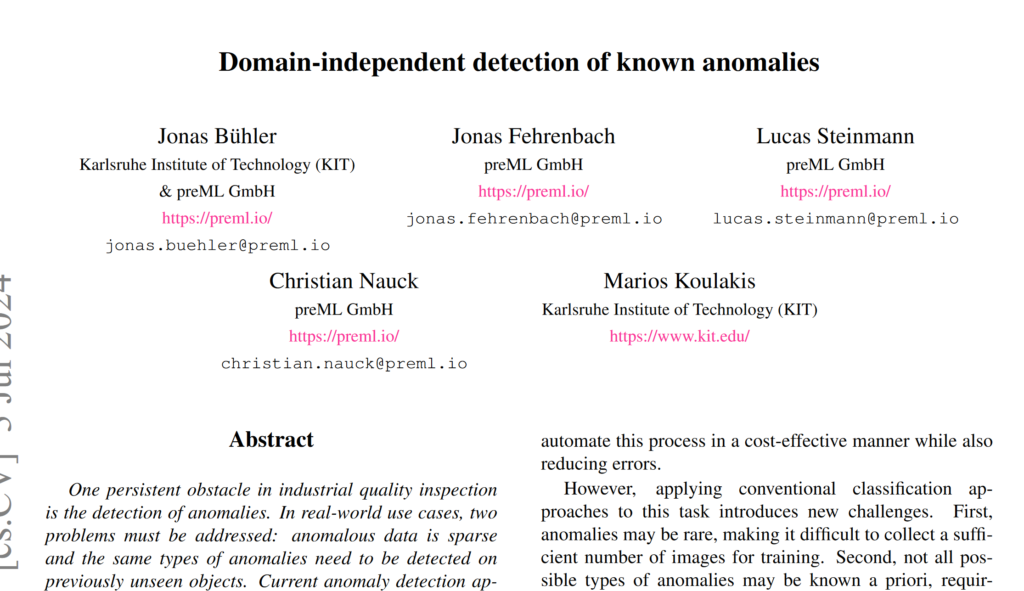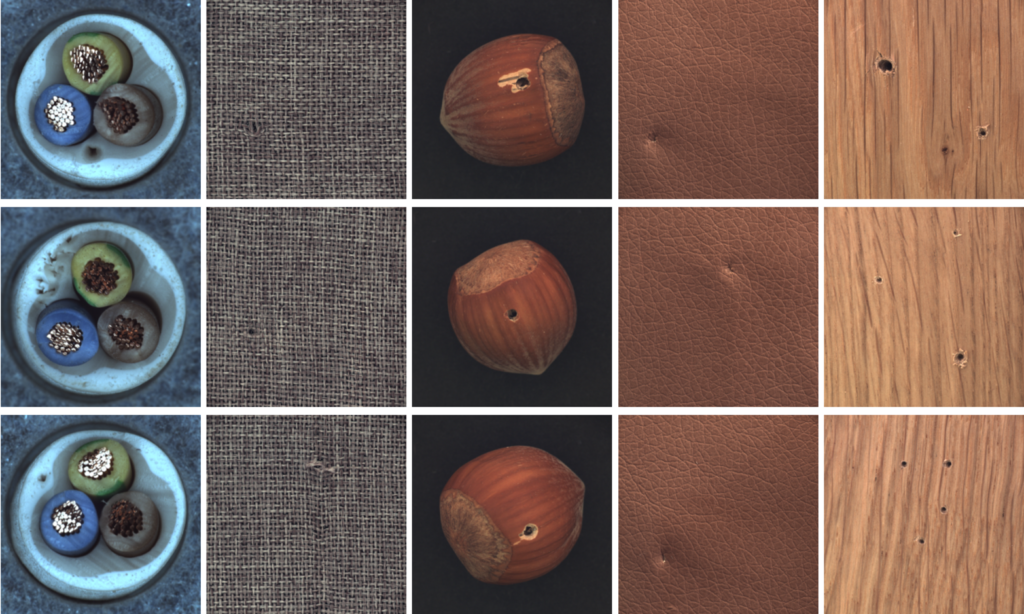Author
Jonas Bühler
Jonas is a software engineer at preML and writes about computer vision and machine learning research projects.
In mid-June, we presented our latest paper on anomaly detection in a workshop at this year’s CVPR conference. Anomaly detection is an AI-based image processing technique to quickly visualize differences on objects. Our research focuses on a technical problem, the detection of known anomaly classes on different objects without the need to collect training data for a new object. A brief overview of the research topic can be found in this article.

Figure 1: Screenshot of our Arxiv paper for CVPR 2024
Research Problem
Anomaly detection can be used to automate quality control and prevent the delivery or installation of faulty components. Currently, anomaly detection models are trained on one object and only work on this object. In practice, this is problematic when new objects are tested or existing objects are slightly modified. In these cases, the models have to be completely retrained for the new objects and variations, which requires the collection of new image data – an often time-consuming process.
Our solution
The aim of the research project was therefore to create new anomaly detection models that can recognize known anomaly classes on new objects without the need for retraining. In order to compare different approaches, we first created reference datasets. We used the well-known MVTec Anomaly Detection dataset as a basis for this. Similar-looking anomalies from different objects were combined into one dataset each. One type of object is then used for testing, the other for training.

Figure 2: Example images from the data set: various objects with holes (c)MVTec (CC BY-NC-SA 4.0).
We have also introduced two new anomaly detection approaches: the Spatial Embedding MLP (SEMLP) and Labeled PatchCore. Both methods are based on proven and pre-trained models, which means that they can be easily trained with just a few images.
Results from research
The new data sets can now be used to research and compare cross-object models. To do this, the models are trained on different objects to recognize a specific anomaly. These are then evaluated on a previously unseen, new object. This tests how well the transfer of anomaly classes to new objects works. One of our approaches, the SEMLP, is already showing promising results. The performance metric Image-level AUROC is 87.2 %, which means that many anomalies are already being detected on unknown objects, but there is still room for improvement.

Figure 3: Results for the detection of holes in wood; most defects are detected very well, but there is still room for improvement in the third image
As the objects in our data sets are very different – from hazelnuts to fabric and leather – it can be assumed that even better results can be expected with similar objects.
What does this mean for practice?
Our research shows that known defects can be detected on previously unknown objects, even if these objects look fundamentally different. These developments mark a significant advance in quality assurance and offer exciting prospects for the future of anomaly detection.
The full text is available free of charge via the following link:
Do you have an application that is suitable for anomaly detection?
Thank you to everyone working with us on this project!
Jonas B. and David
Feel free to contact us anytimes at contact@preml.io
Autor
Jonas Bühler
Jonas is a software engineer at preML and writes about computer vision and machine learning research projects.